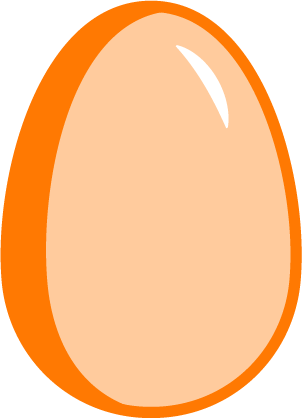Core STEM skills:
Learning to think and discover

Creative thinking

Fluency of thinking

Flexibility of thinking

Originality of thinking

Sensitivity to problems

Elaboration

Critical thinking
Mathematical reasoning

Scientific thinking

Asking questions

Analyzing and solving problems

Designing experiments

Conducting research – predicting, testing hypothesis, observing, experimenting

Drawing conclusions based on evidence, reasoning

Using digital tools do conduct and document research
Other skills:
Learn to move graciously

Large and fine motor skills

Hand-eye coordination

Precise and efficient movement
Learn to work in a team

Taking common decisions

Sharing ideas: negotiating meanings

Sharing responsibility for a task

Accepting leadership and management

Following the safety rules and discipline
Learn to use language

Basic literacy: reading, writing, listening with comprehension

ICT literacy: using computer to communicate with others
Core STEM skills include two essential groups of abilities:
A group of cognitive skills called “Learning to think and discover”. These are the abilities underlying the problem-solving ability, such as: identifying the problem/ realizing the gap in one’s own knowledge and becoming curious about it, formulating the precise question, predicting the possible answers (hypothesis), designing the procedure necessary to check the predictions (to test the hypothesis), conducting research, observing the results, and drawing evidence-based conclusions etc. All these are crucial ingredients of so called “scientific thinking” – precise, logical, evidence-based reasoning underlying every scientific procedure, both inductive and deductive. An important areas of such thinking are also:

Creative thinking – a thought process used to generate new ideas while exploring many different possible solutions. Divergent, non-linear reasoning is usually activated while coping with open questions which force the learner to go beyond the stereotypes, find unexpected connections, think outside the box, instead of searching for an algorithm (or cognitive schema). Important qualities of divergent thinking are described by J.P. Guilford as:
- Fluency of thinking – the ability to generate many ideas in a certain period of time (the speed of inventing new ideas);
- Flexibility of thinking – the ability to come up with different types of answers underlying the adaptability being ready to change the direction of thinking;
- Originality of thinking – the ability to invent unusual, non-stereotypical ideas which allow the person to look at the problem from a different, unexpected, surprising, metaphorical perspective;
- Sensitivity to problems – a questioning attitude, ability to perceive disadvantages, shortcomings of objects, possible problems or barriers in actions, inconsistencies or gaps in data etc.;
- Elaboration – the amount of effort invested in presenting the creative idea (clarifying, explaining, embellishment, saturation with details, correcting one’s own work to etc.)

Critical thinking – reflective, evaluative, judgmental attitudes towards the knowledge statements – the ability to undertake critical reflection in the process of understanding and creating knowledge. “A process that involves asking appropriate questions, gathering and creatively sorting through relevant information, relating new information to existing knowledge, re-examining beliefs and assumptions, reasoning logically, and drawing reliable and trustworthy conclusions. Critical thinking calls for a persistent effort to apply theoretical constructs to understanding the problem, consider evidence, and evaluate methods or techniques for forming a judgement. The cognitive skills of analysis, interpretation, inference, explanation, evaluation, monitoring and correcting one’s own reasoning are at the heart of critical thinking” (IBE, p. 15).

Mathematical reasoning – the ability to use mathematical concepts and disciplined thinking to solve everyday problems, to perceive the reality as internally organized, based on the concepts of number, quantity, frequency, patterns, internal rhythms etc. They include: precision and logic in managing quantitative data (counting, calculating, measuring, classifying), but also the ability to represent ideas in a mathematical way (create patterns, models, theoretical constructs, tables, graphs etc.).
Please note, these skills are naturally intertwined, inseparable, interacting or conditioning each other. They were separated only on theoretical level of description to illustrate the most important aspects of STEM education. A good example of such interaction is the ability to use digital tools to conduct and document research, present their results or communicate with others, to share knowledge, create the culture/ or environment of thinking This ability may be perceived as a separate set of skills (e.g. searching for information, comparing data from different sources, selecting the most important pieces of the search, using popular applications etc). In STEM education however, such skills are embedded in a broader process of conducting scientific experiments, exploring the reality around with the practical use of digital tools. Computer and ICT technology becomes here an important tool of thinking – helpful, but external, complementing the capabilities of the human mind rather than replacing/ substituting them.
A group of abilities related to self-regulated learning – represented in the Matrix as “Learning to learn”. These are the combination of cognitive, metacognitive and emotional skills described in EU documents (Hoskins, Fredriksson 2008) as a reference to all cross-cultural measures of competence in learning, e.g. PISA tests. The official definition of „Learning to learn” was offered by European Council in 2006 – „the ability to pursue and persist in learning, to organize one’s own learning, including effective management of time and information, both individually and in groups. This competence includes awareness of one’s learning process and needs, identifying available opportunities, and the ability to overcome obstacles in order to learn successfully. This competence means gaining, processing and assimilating new knowledge and skill as well as seeking and making use of guidance. Learning to learn engages learners to build on prior learning and life experiences in order to use and apply knowledge and skills in a variety of contexts: at home, at work, in education and training” (Education Council, 2006 annex, paragraph 5). Self-initiated, self-regulated, independent, intentional learning has become the key to personal and professional development in the contemporary world.
There are 3 crucial dimensions of “Learning to learn” ability, as described by Hoskins and Fredriksson (2008, p. 28-28):
- The affective dimension comprises such elements, such as:
- motivation to learn and engage,
- academic self-concept and self-esteem – positive self-image as a learner, ability to recognizing one’s own strengths and dispositions in the learning process;
- the feeling of self-efficacy based on previous positive experiences, achievements and successes in learning;
- emotional resistance – the ability to cope with stress and negative feeling which might occur while learning
- The cognitive dimension is based on executive function and the effectiveness of basic cognitive processing,
- The metacognitive dimension comprises such abilities as: planning one’s own learning, monitoring the course and effectiveness of learning process, evaluating the achieved results etc. All these abilities are the prerequisites for achieving the cognitive autonomy and becoming a self-regulated learner, independent in thinking and making decisions, however able and eager to search for educational support in social environment if needed.
Learning to learn abilities are often disrespected or not taken seriously enough in preschool education, perceived by many teachers as „too difficult” for young learners. STEM education allows to include these abilities as a natural elements of everyday learning.
Please note: We decided to use the term “skills or abilities” instead of competencies for two reasons:
- Preschool core-curricula of partner countries concentrate on skills defined as “the ability, proficiency or dexterity to carry out tasks that come from education, training, practice or experience” (IBE 2013, p. 53). Skill is the ability to perform actions which achieve a desired outcome.
- The concept of “competence” is much broader, going beyond the knowledge and skills. The Council of Europe (1997) proposed that competence should be regarded “as the general capability based on knowledge, experience, values, dispositions which a person has developed through engagement with educational practices” (p. 26). Therefore, the concept of competence „is not limited to cognitive elements (involving the use of theory, concepts or tacit knowledge); it also encompasses functional aspects (involving technical skills) as well as interpersonal attributes (e.g. social or organizational skills) and ethical values” (IBE 2013, p. 12). The great benefit to a concept like “competence” is that it directs our attention beneath the observable behavioral surface of “skills” to inquire into the mental capacity that creates the behavior. And it directs our attention beyond the acquisition of ‘knowledge’ as storable contents (what we know) to inquire into processes by which we create knowledge (how we know)” (Hoskins, Fredriksson 2008, p. 11). Considering the above, we concluded that achieving the competence at an early stage of life is quite impossible.
